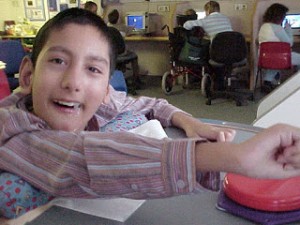Babies and Bathwater: The social element of cause & effect

So here’s the thing… I’m sat in a quiet classroom with six students all busy using some of the cause and effect apps I’ve been recommending over the last six months. Everyone is busy doing their own thing. The students are touching the iPad screen and generating wonderful patterns and sound effects with the movement of their fingers. They are looking, listening and in some cases responding with smiles and sounds.
So why do I feel so uneasy, after all, I’m sat in a quiet classroom and everyone is busy doing their own thing.



